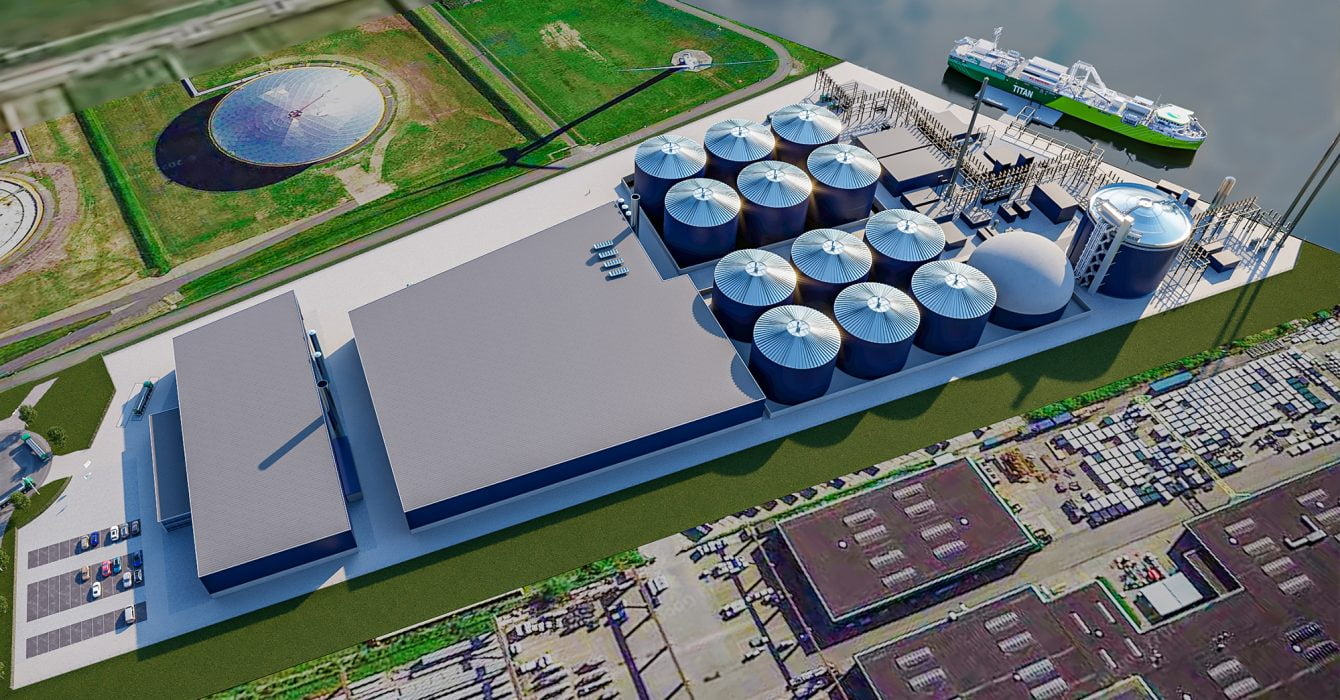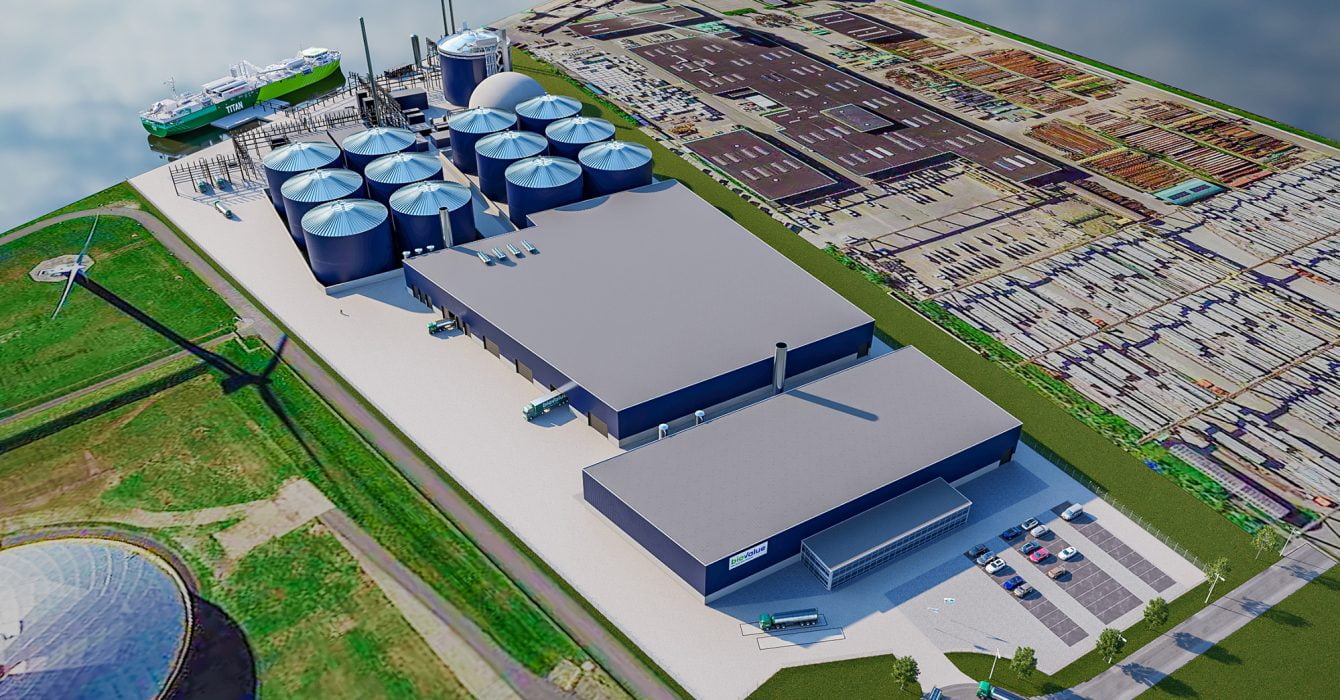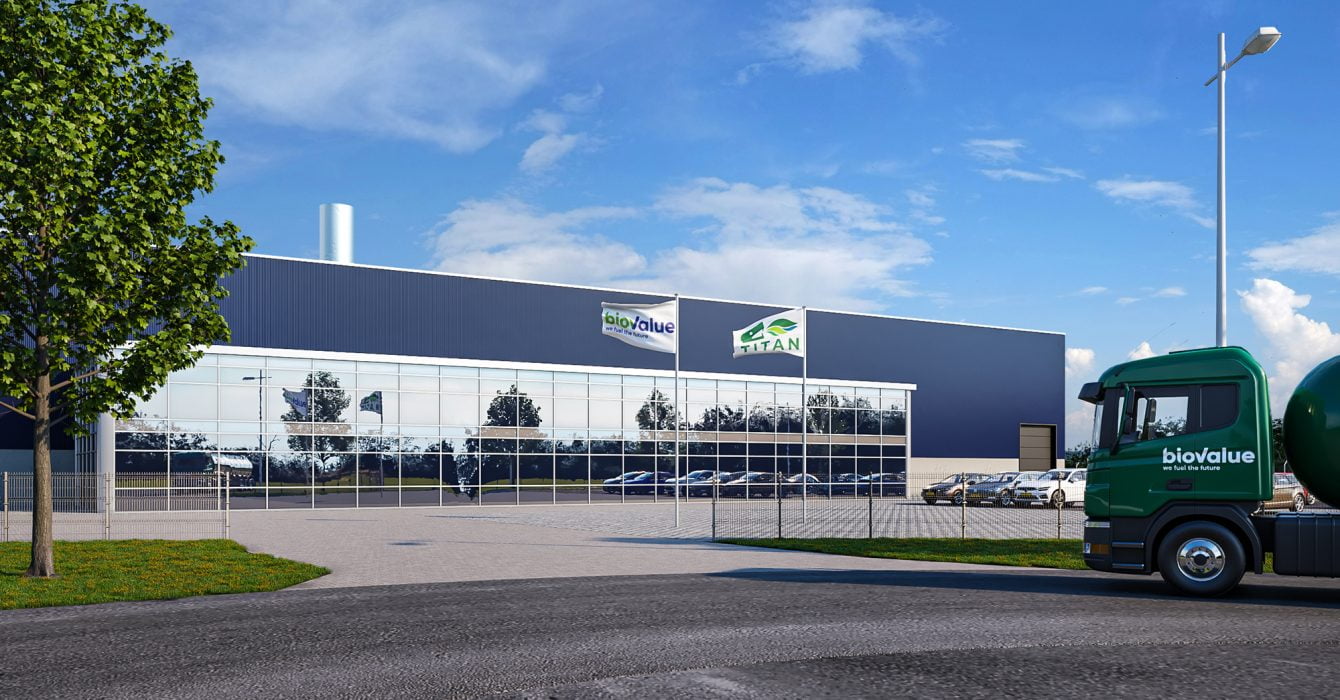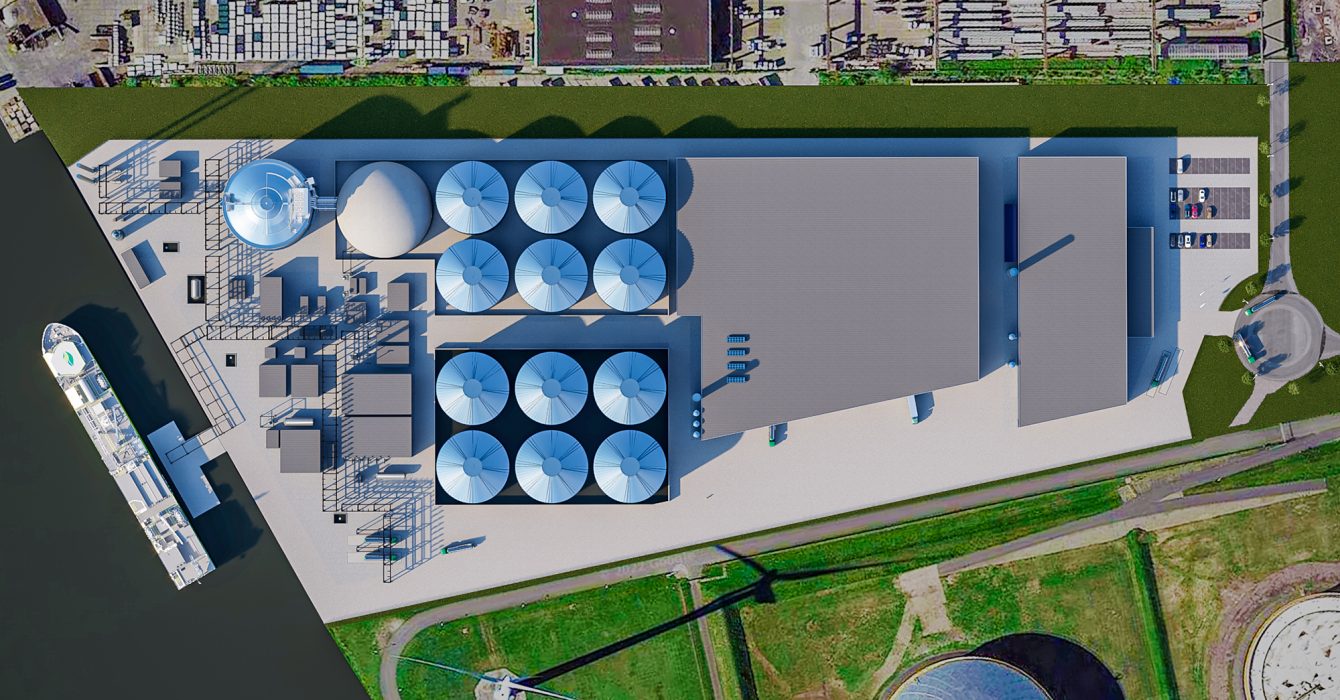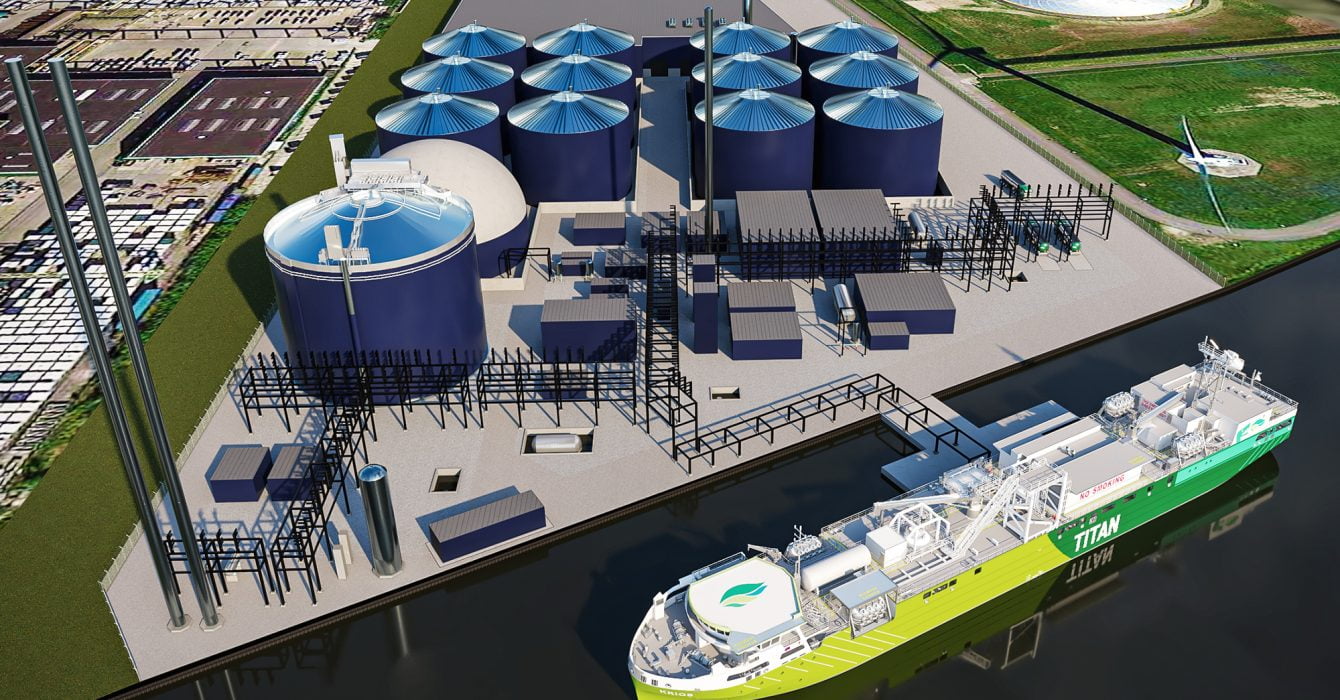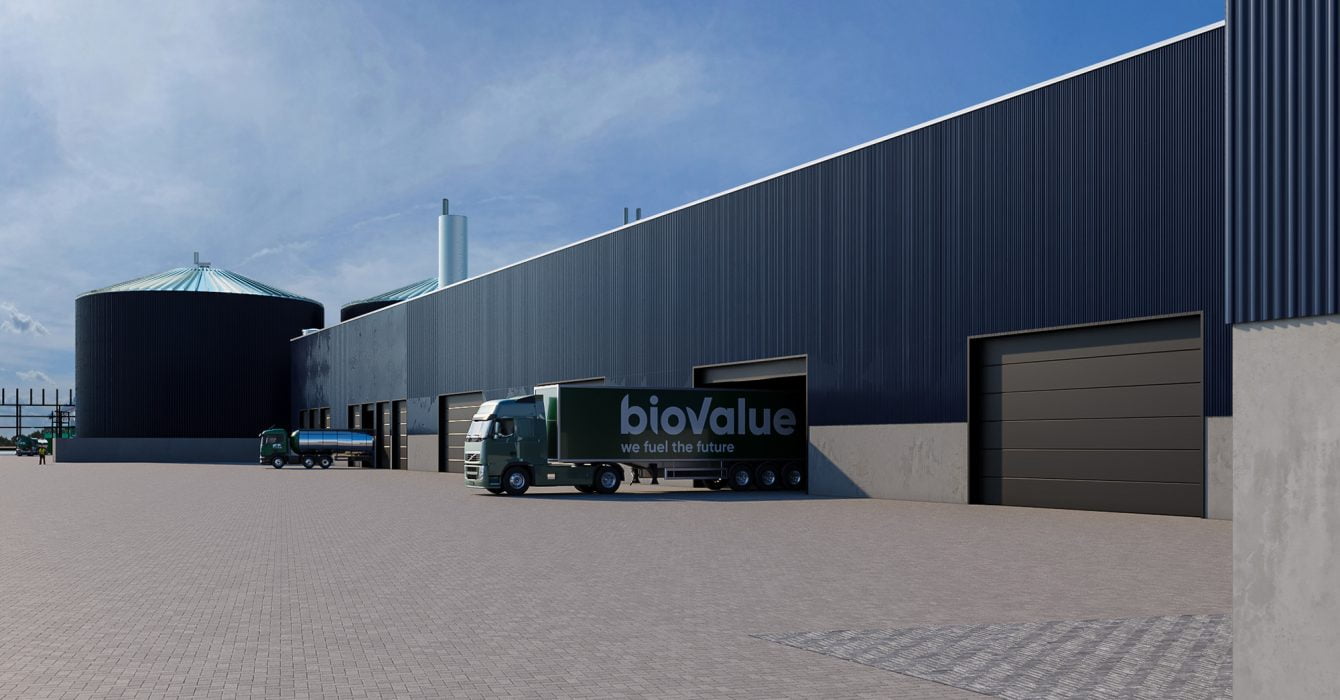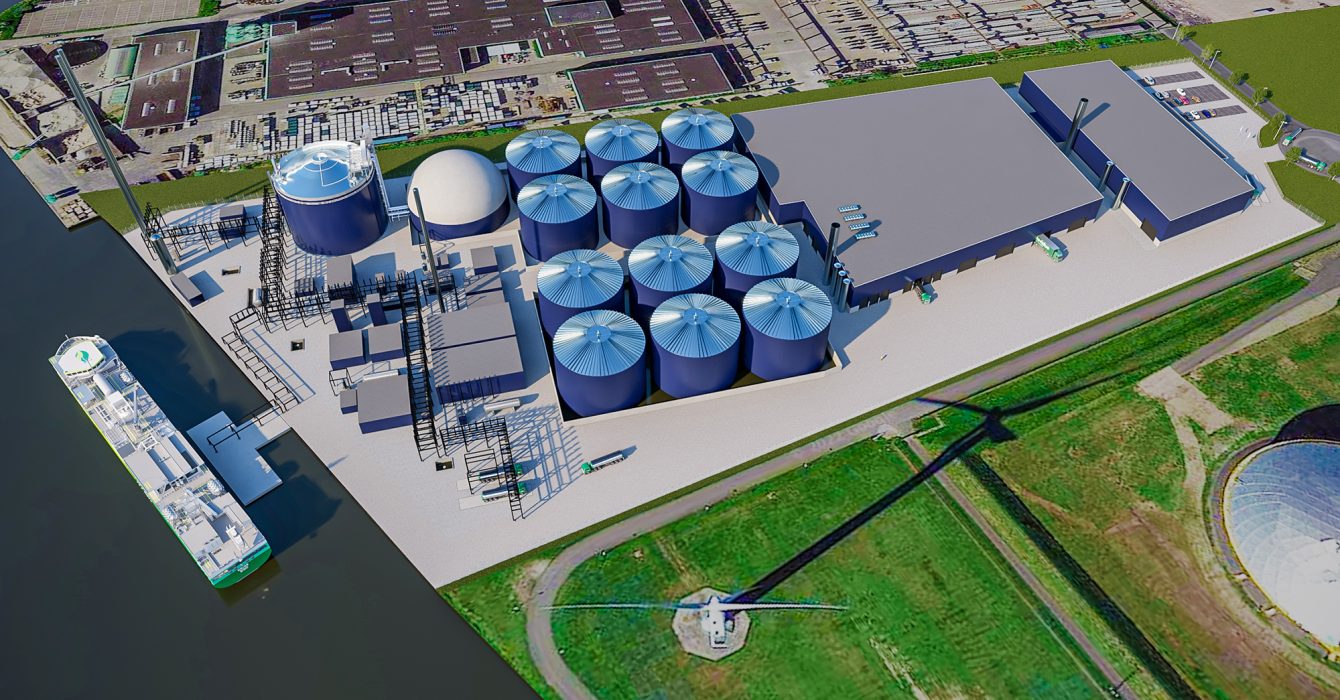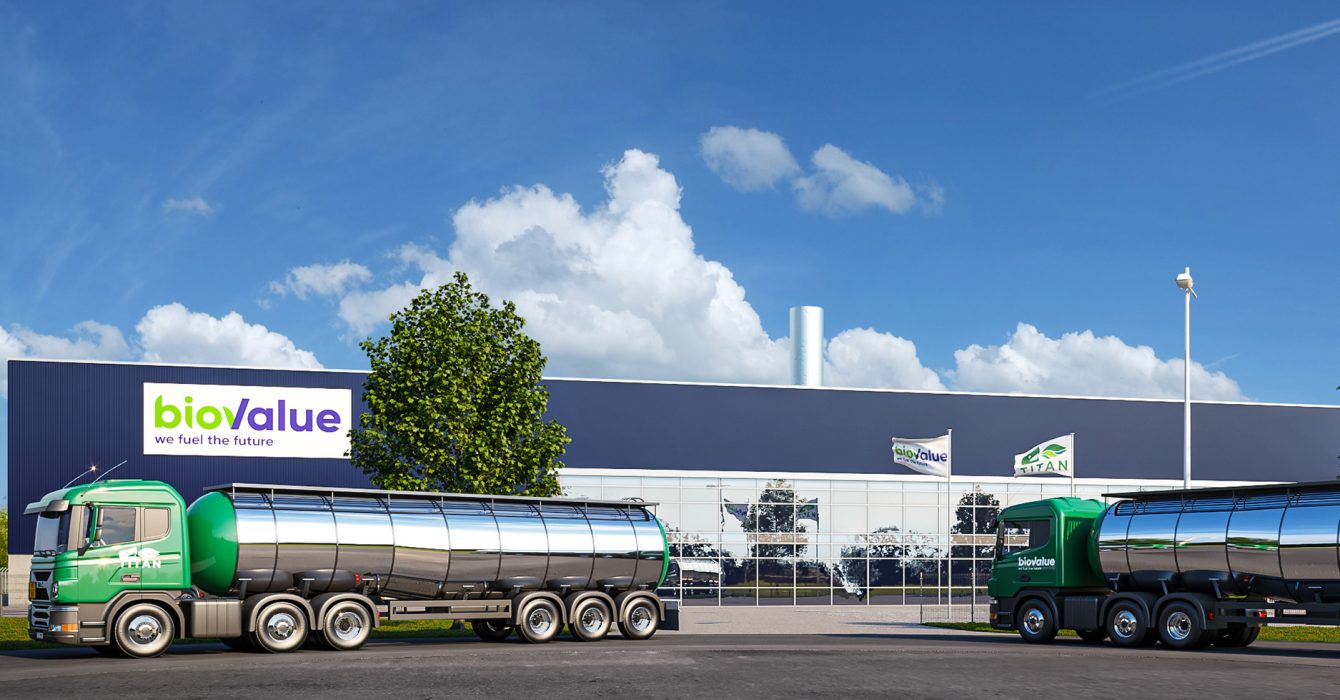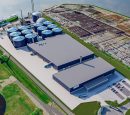Bio-LNG production at the port of Amsterdam
BioValue’s biogasplant in Amsterdam
Hypermodern installation
This is BioValue’s biggest project to date. Together with Titan clean fuels, we are building the largest bio-LNG I nstallation in the world. Two state-of-the-art, sustainable production facilities to be set up on a single site in the port of Amsterdam. We are responsible for the building and operation of the biogas plant, and Titan for the plant converting biogas into bio-LNG.
Capacity
The biogas plant will start with a processing capacity of 300,000 tons of organic waste streams per year.
To ensure the quality of everything that goes into the digester as input, the waste streams must first be approved by various entities. By good quality we mean, among other things:
- No longer suitable as animal feed
- CO2-neutral
- No energy crop
- Exclusively of organic origin
Titan’s plant converts the released biogas into bio-LNG. Thereafter, up to 200,000 tons of bio-LNG can be shipped through the LNG terminal.
Strategic location
The western port area of Amsterdam (Westpoort) lies in a strategic, central location that is ideally suited to this project. Ships can take on fuel from Titan on the spot. And there is plenty of organic material available in the area for use in the biogas plant’s digester. This keeps road transport to a minimum and makes the project even more sustainable.
“Titan is fully committed to making shipping more sustainable by supplying LBM (liquified bio methane) and other clean fuels, such as e-methane produced from hydrogen, also known as E-LNG. Strategic chain cooperation is crucial to enabling the scale-up of alternative fuels for shipping. We are proud of the joint effort with BioValue in this project and look forward to long-term collaboration.”
Ronald van Selm
What is bio-LNG?
Bio-LNG is a fossil-free fuel. Like ‘normal’ LNG, it is a suitable alternative fuel for trucks and shipping.
Difference between bio-LNG and ‘normal’ LNG.
The abbreviation LNG stands for ‘liquified natural gas’. It is fossil-based natural gas cooled to -162 degrees Celsius. Its volume also shrinks 600 times during this process. This allows for efficient transport and storage.
Bio-LNG is the (even) more sustainable version of LNG. Instead of fossil natural gas, green gas is used. Bio-LNG is also known as LBM (liquified bio methane) in English.
In the table below, we compare diesel, LNG and bio-LNG.
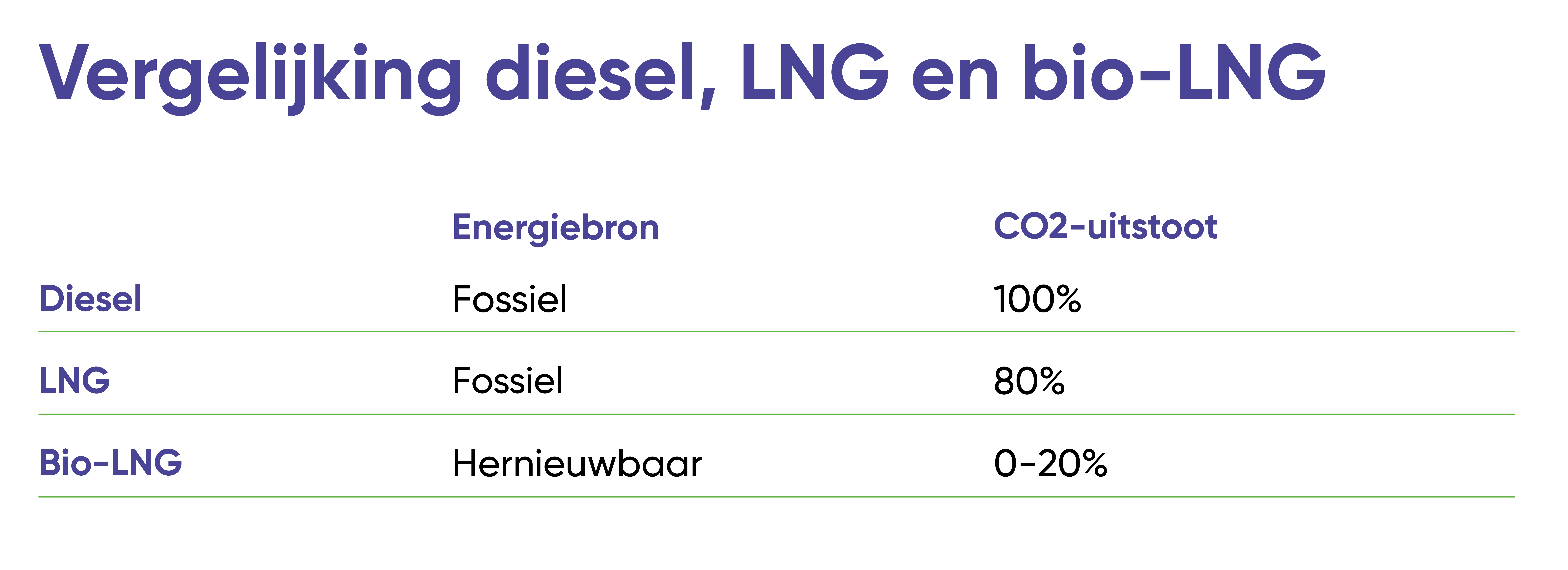
Diesel is a fossil fuel that has high CO2 emissions through both extraction and combustion.
LNG also comes from a fossil source, but has lower CO2 emissions of about 80% compared to diesel when produced and burned.
Bio-LNG is the only one on this list that is a renewable fuel. Meaning that it does not deplete the Earth’s resources. Production has low CO2 emissions and combustion virtually none.
So what is e-LNG and e-methane?
The ‘e’ in e-LNG and e-methane stands for ‘electricity’. They are not actually electric power sources, but it indicates how the fuel is made.
Electrolysis devices separate water into hydrogen and oxygen. Special processes convert the hydrogen into e-LNG (hydrogen-based LNG) or e-methane (‘regular’ hydrogen-based gas). This method of power generation is fairly new and still under development. It is expected to play a major role in making the transportation sector more sustainable.


